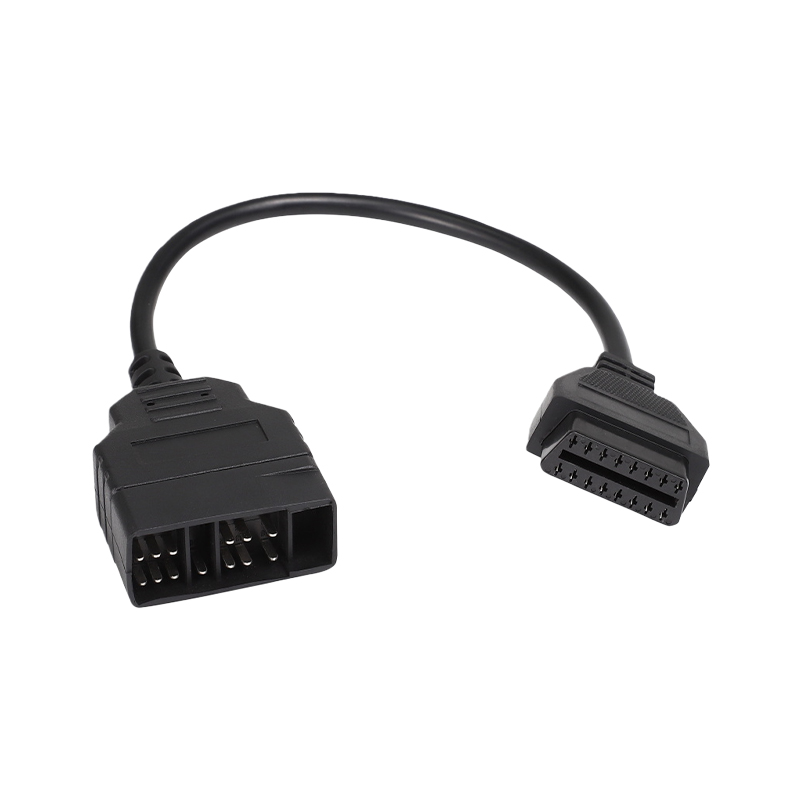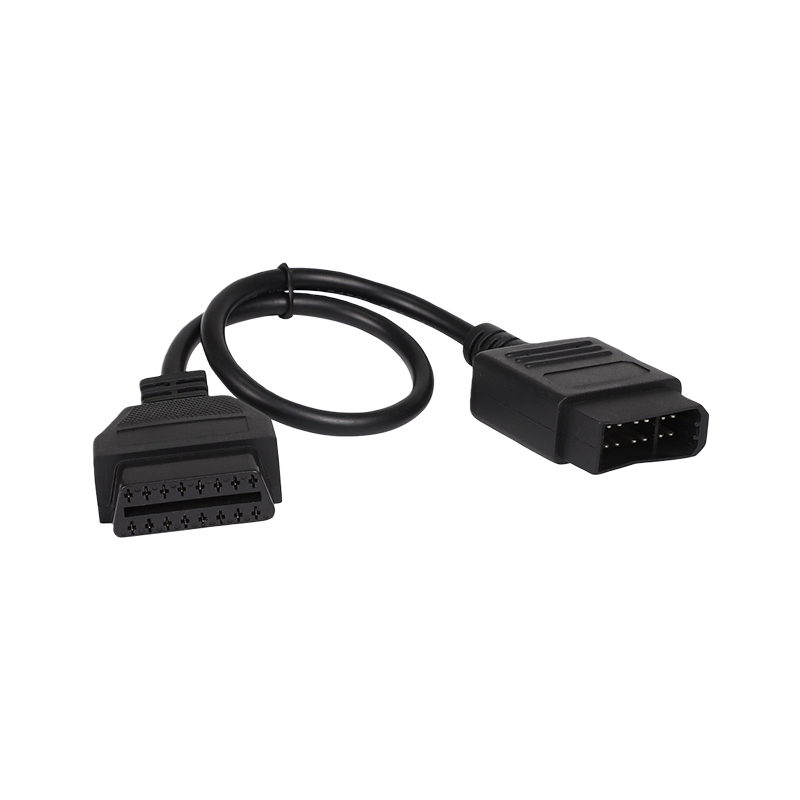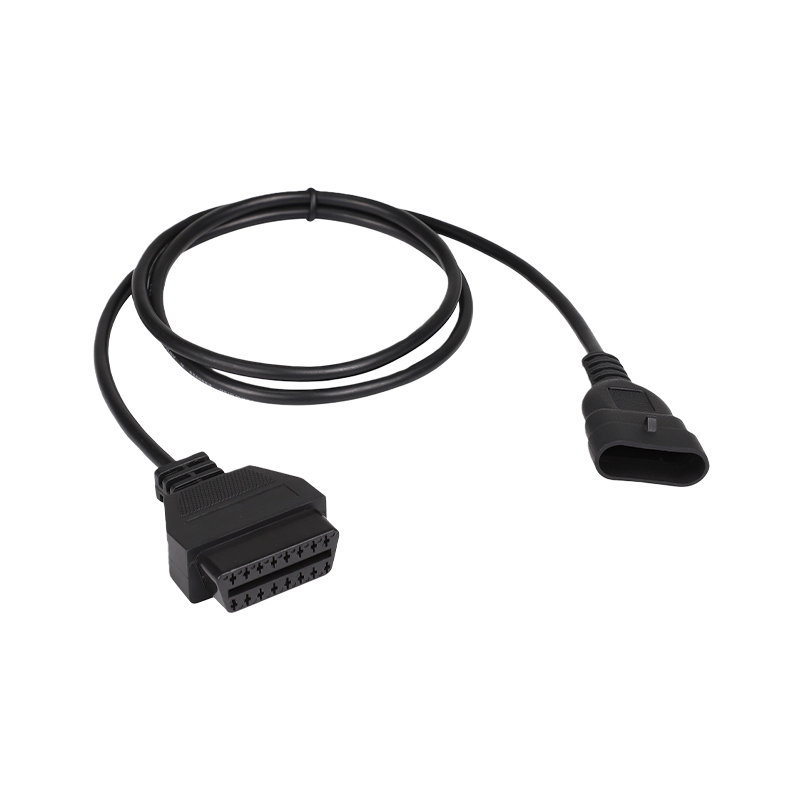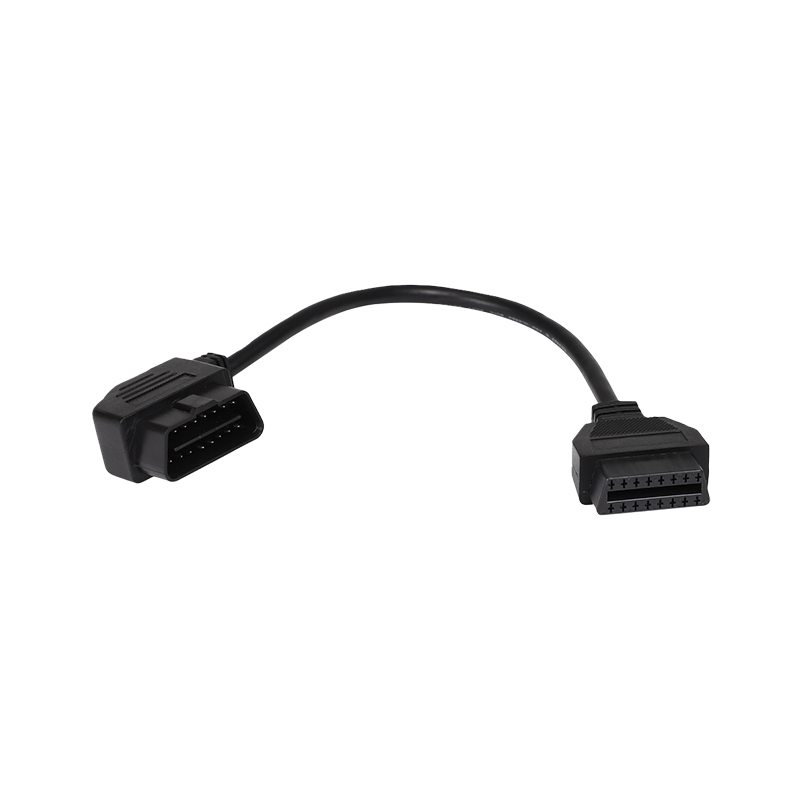What changes occur in the properties of the insulation material of OBD cable at low temperatures?
Release Time : 2025-10-29
In low-temperature environments, the insulation properties of OBD cables undergo significant changes due to alterations in molecular structure and physical state. These changes directly affect the cable's flexibility, insulation strength, and long-term reliability. As a key component of automotive diagnostic interfaces, OBD cables need to operate stably within a wide temperature range of -40°C to 85°C, and low-temperature environments pose severe challenges to their insulation materials.
Low temperatures first reduce the mobility of molecular chain segments in the insulation material, causing the material to gradually transition from a highly elastic state to a glassy state. Ordinary PVC insulation materials harden rapidly at low temperatures, as their molecular chain segments lose mobility due to freezing, leading to increased brittleness. This hardening phenomenon makes the cable prone to microcracks when bent or vibrating, especially under conditions of frequent OBD cable insertion and removal or vehicle bumps, where crack propagation can lead to insulation failure. In contrast, cross-linked polyethylene (XLPE), through chemical cross-linking, forms a three-dimensional network structure with stronger intermolecular forces, maintaining a certain degree of flexibility at low temperatures, making it the preferred material for cold-resistant design of OBD cables.
Low-temperature environments also cause stress concentration issues related to shrinkage in the insulation material. When temperatures decrease, the insulation layer and components such as conductors and shielding layers shrink asynchronously due to differences in their coefficients of thermal expansion. For example, the shrinkage rate of metallic conductors is typically higher than that of polymer insulation layers. This difference creates shear stress at the interface. If the stress exceeds the bond strength of the materials, it may lead to insulation peeling or cracking. If OBD cables employ a multi-layered composite structure, stress needs to be dispersed by optimizing the material formulation of each layer or adding buffer layers. For instance, adding an elastomer transition layer between the insulation layer and the sheath can effectively absorb shrinkage stress and improve low-temperature crack resistance.
The impact of low temperatures on the electrical properties of insulation materials is also significant. Under extremely cold conditions, the volume resistivity of materials increases significantly. While this may seem beneficial for improving insulation performance, it can actually increase the risk of partial discharge due to material embrittlement. When microcracks appear in the insulation layer, the high resistivity can hinder charge neutralization, causing the electric field to concentrate at the crack tip and accelerating the electro-aging process. Furthermore, low temperatures can alter the dielectric constant and dielectric loss tangent of the material, affecting signal transmission quality. For high-speed communication signals such as CAN buses carried by OBD cables, these changes in electrical properties may lead to signal attenuation or increased bit error rate, affecting diagnostic accuracy. To address the challenges of low temperatures, the insulation materials for OBD cables require performance optimization through molecular design. For example, using special elastomers such as silicone rubber as the insulation layer, whose silicon-oxygen bonds in the main chain possess unique flexibility and a glass transition temperature as low as -60°C, allows them to maintain elasticity even in extremely cold environments. Fluoroplastics such as polytetrafluoroethylene (PTFE) achieve wide-temperature stability through strong covalent bonds and a symmetrical molecular structure, covering an operating temperature range of -200°C to 260°C, but are more expensive and typically used in high-end OBD cables. Some products also incorporate nanofillers such as silica or carbon nanotubes, which, through interfacial interactions between the fillers and the polymer matrix, suppress low-temperature embrittlement and enhance mechanical strength.
Process improvement is also crucial for enhancing the low-temperature performance of OBD cables. Electron beam irradiation crosslinking technology uses high-energy electron beam bombardment to form chemical bonds between polymer molecular chains, constructing a three-dimensional network structure that significantly improves the material's cold resistance and abrasion resistance. This crosslinked structure restricts molecular chain slippage at low temperatures, preventing the material from hardening and cracking. Furthermore, stringent testing methods such as low-temperature dynamic bending tests and low-temperature drop tests simulate bending, vibration, and impact scenarios in actual use, ensuring that OBD cables still meet mechanical performance requirements at low temperatures.
From a long-term reliability perspective, low-temperature environments accelerate the aging process of insulation materials. While low temperatures themselves do not cause thermal aging, the embrittlement of materials at low temperatures reduces their resistance to mechanical fatigue. For example, the rapid temperature changes of OBD cables during vehicle startup can trigger thermal expansion and contraction cycles, leading to microcracks within the insulation layer. If the material lacks sufficient resistance to crack propagation, these microcracks will gradually evolve into macroscopic cracks, ultimately causing insulation failure. Therefore, the insulation materials for OBD cables need to achieve a balance between low-temperature toughness and long-term stability through optimized formulations and processes.







